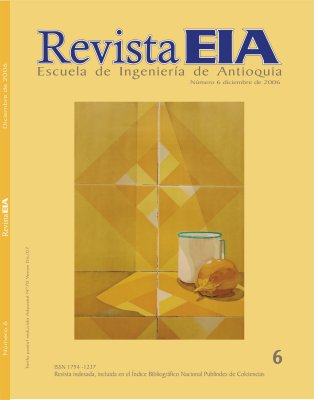AMBIENTE INTELIGENTE DISTRIBUIDO DE APRENDIZAJE: INTEGRACIÓN DE ITS Y CSCL POR MEDIO DE AGENTES PEDAGÓGICOS
AMBIENTE INTELIGENTE DISTRIBUIDO DE APRENDIZAJE: INTEGRACIÓN DE ITS Y CSCL POR MEDIO DE AGENTES PEDAGÓGICOS


This work is licensed under a Creative Commons Attribution-NonCommercial-NoDerivatives 4.0 International License.
Copyright statement
The authors exclusively assign to the Universidad EIA, with the power to assign to third parties, all the exploitation rights that derive from the works that are accepted for publication in the Revista EIA, as well as in any product derived from it and, in in particular, those of reproduction, distribution, public communication (including interactive making available) and transformation (including adaptation, modification and, where appropriate, translation), for all types of exploitation (by way of example and not limitation : in paper, electronic, online, computer or audiovisual format, as well as in any other format, even for promotional or advertising purposes and / or for the production of derivative products), for a worldwide territorial scope and for the entire duration of the rights provided for in the current published text of the Intellectual Property Law. This assignment will be made by the authors without the right to any type of remuneration or compensation.
Consequently, the author may not publish or disseminate the works that are selected for publication in the Revista EIA, neither totally nor partially, nor authorize their publication to third parties, without the prior express authorization, requested and granted in writing, from the Univeridad EIA.
Show authors biography
En este artículo se describe inicialmente el marco teórico de referencia enmarcado en los Ambientes Inteligentes Distribuidos de Aprendizaje (DILE), Sistemas Tutoriales Inteligentes (ITS), Ambientes Colaborativos de Aprendizaje Apoyados en Computador (CSCL) y Sistemas Multiagente (MAS) Pedagógicos; para luego presentar el Ambiente Multiagente de Enseñanza/Aprendizaje ALLEGRO. Además de integrar las anteriores áreas de investigación de la Inteligencia Artificial Distribuida (DAI), ALLEGRO fundamenta su paradigma instruccional en tres modelos pedagógicos: el conductismo, el cognitivismo (cognición distribuida y aprendizaje basado en problemas) y la teoría histórico-social. La validación fue realizada con diversos casos de estudio en el dominio de gráfica digital para cursos de postgrado en arquitectura.
Abstract: In this article we start describing the theory inside the Distributed Intelligent Learning Environment (DILE), Intelligent Tutorial Systems (ITS), Computer-Supported Collaborative Learning (CSCL), and MultiAgent Pedagogical Systems (MAS); therefore, we can present the Multi-Agent Teaching/Learning systemcalled ALLEGRO. Besides of putting all the areas mentioned and those regarding the research of Distributed Artificial Intelligence (DAI) together, ALLEGRO fundaments its instructional paradigm in three pedagogical models: conductive, cognitive (distributed cognition and problem-based learning) and the social-historical theory. The validation was made through studying different cases handling digital graphics for graduate courses on Architecture majoring.
Article visits 324 | PDF visits 242
